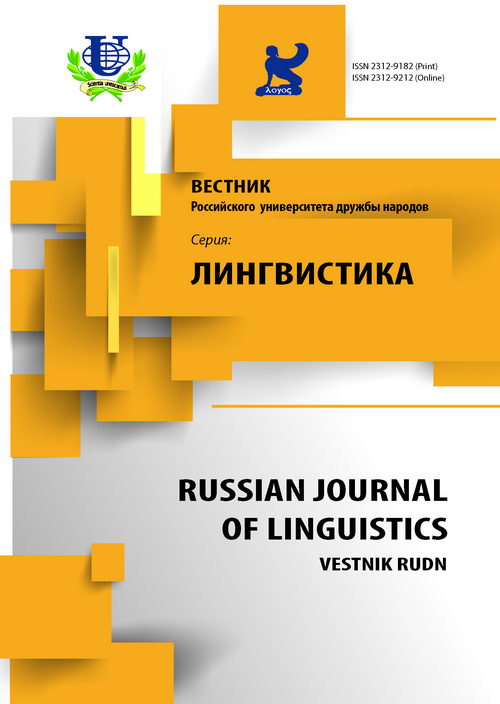Speech Act Classification of German Advertising Texts
- 作者: Mamedov AN1
-
隶属关系:
- Moscow State Pedagogical University
- 期: 编号 2 (2015)
- 页面: 90-103
- 栏目: Articles
- URL: https://journals.rudn.ru/linguistics/article/view/9351
如何引用文章
全文:
详细
This paper uses the theory of speech acts and the underlying concept of pragmalinguistics to determine the types of speech acts and their classification in the German advertising printed texts. We ascertain that the advertising of cars and accessories, household appliances and computer equipment, watches, fancy goods, food, pharmaceuticals, and financial, insurance, legal services and also airline advertising is dominated by a pragmatic principle, which is based on demonstrating information about the benefits of a product / service. This influences the frequent usage of certain speech acts. The dominant form of exposure is to inform the recipient-user about the characteristics of the advertised product. This information is fore-grounded by means of stylistic and syntactic constructions specific to the advertisement (participial constructions, appositional constructions) which contribute to emphasize certain notional components within the framework of the advertising text. Stylistic and syntactic devices of reduction (parceling constructions) convey the author's idea. Other means like repetitions, enumerations etc are used by the advertiser to strengthen his selling power. The advertiser focuses the attention of the consumer on the characteristics of the product seeking to convince him of the utility of the product and to influence his/ her buying behavior.
作者简介
A Mamedov
Moscow State Pedagogical University
Email: ArturNM@yandex.ru
Department of West European Languages and methodology of teaching
参考
- Вежбицкая А. Семантические универсалии и описание языков. М.: Спутник, 1999.
- Кудрикова Э.И. Проблемы интерпретации простого монопредикативного предложения в немецком языке. Язык и культура. Новосибирск, 2003. С. 110-117.
- Макарова О.С. Функционально-семантическое описание рекламных коммуникативных актов: Дисс.. канд. филол. наук, Тверь, 2006.
- Нефёдова Л.А., Любавина А.Ю. Роль репрезентативного речевого акта в агитационном тексте политического характера // Вестник Иркутского государственного лингвистического университета. 2009. Вып. 1.
- Остин Дж. Слово как действие // Новое в зарубежной лингвистике: Вып. ХVII. М.: Прогресс, 1986. С. 22-129.
- Серль Дж.Р. Что такое речевой акт? // Новое в зарубежной лингвистике: Вып. 17. М.: Прогресс, 1986. С. 151-170.
- Сёрль Дж.Р. Классификация иллокутивных актов // Новое в зарубежной лингвистике: Вып. 17. М.: Прогресс, 1986.
- Стрижкова О.В. Специфика реализации коммуникативных стратегий в рекламном дискурсе: на материале англо- и русскоязычной рекламы продуктов питания: Дисс.. канд. филол. наук. Челябинск, 2012.
- Строева И.С. Прагматические и когнитивные особенности текстов английской и русской классифицированной рекламы (сравнительно-сопоставительный анализ): Дисс.. канд. филол. наук. Пятигорск, 2008.
- Терентьева Л.П. О соотношении семантики и прагматики словесного знака // Проблемы прагмалингвистики: сб. науч. тр. М., 1983. С. 107-120.














